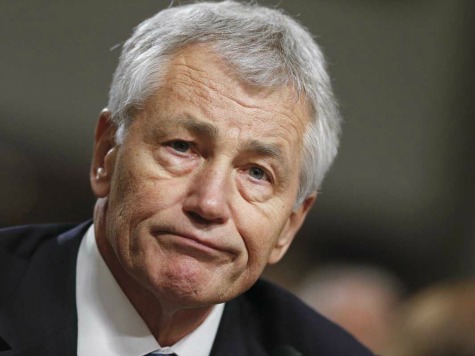There will be up to 1,000 more U.S. soldiers in Afghanistan after the end of this year, potentially raising the total to 10,800 instead of the 9,800 that President Obama said would be there by the beginning of 2015, outgoing Secretary of Defense Chuck Hagel revealed.
According to the Pentagon chief, the reason why the additional troops are needed is because delays in signing the bilateral security agreement impacted plans to raise troops from other nations for the post-2014 mission.
“This will mean the delayed withdrawal of up to 1,000 U.S. troops so that up to 10,800 troops, rather than 9,800, could remain in Afghanistan through the end of this year, and for the first few months next year,” explained Secretary Hagel during a joint press conference on Dec. 6 with Afghan President Ashraf Ghani in Kabul. “But the president’s authorization will not change. It will not change our troops’ missions or the long-term timeline for our withdrawal.”
Part of the post-2014 mission will involve providing “limited combat enabler support” to Afghan forces, said the Secretary of Defense.
“American personnel will always have the right and the capacity to defend themselves against attacks,” added Hagel. “We will maintain a limited counterterrorism against al-Qaeda and its remnants because as we drawdown the combat mission, we have not forgotten what brought America to Afghanistan over a decade ago. And we will take appropriate measures against Taliban members who directly threaten U.S. and coalition forces in Afghanistan, or provide direct support to al-Qaeda.”
Hagel highlighted a recent spike in Taliban attacks as a reminder of why the international mission in Afghanistan must go on.
“Between 2012 and 2015 the United States will have provided more than $8 billion in civilian assistance, and our commitment will be enduring,” said the Pentagon chief. “The recent wave of Taliban attacks has made clear that the international community must not waiver in its support for a stable, secure and prosperous Afghanistan.”
Hagel’s visit followed the deadliest year for Afghan security forces since the war started on October 7, 2001, Reuters reports.
“As of early November, about 4,600 members of the Afghan security forces had been killed in 2014, more than 6 percent higher than the same period of 2013,” mentions the article.
Former Afghan President Hamid Karzai refused to sign a security pact that would have paved the way for the United States to start planning the size, scope, and timeline of the U.S. military presence in Afghanistan after 2014.
Under the newly-elected leader, President Ghani, the Afghan Parliament recently approved the agreement between Kabul and Washington.
The U.S./NATO-led combat mission is expected to end by Dec. 31.
Initially, President Obama said the U.S. would drawdown its forces to 9,800 by the end of this year, a figure that is expected to be cut in half by the end of 2015.
By the end of 2016, the U.S. military is expected to be completely out of Afghanistan with the exception of a small force that will remain to secure the American embassy.
U.S. military deaths have increased dramatically since Obama was inaugurated in 2009.
Republicans in Congress have criticized Obama’s drawdown strategy, saying it could lead to a rise in insurgency much like what happened in Iraq after the U.S. military left.
Reuters contributed to this report.

COMMENTS
Please let us know if you're having issues with commenting.